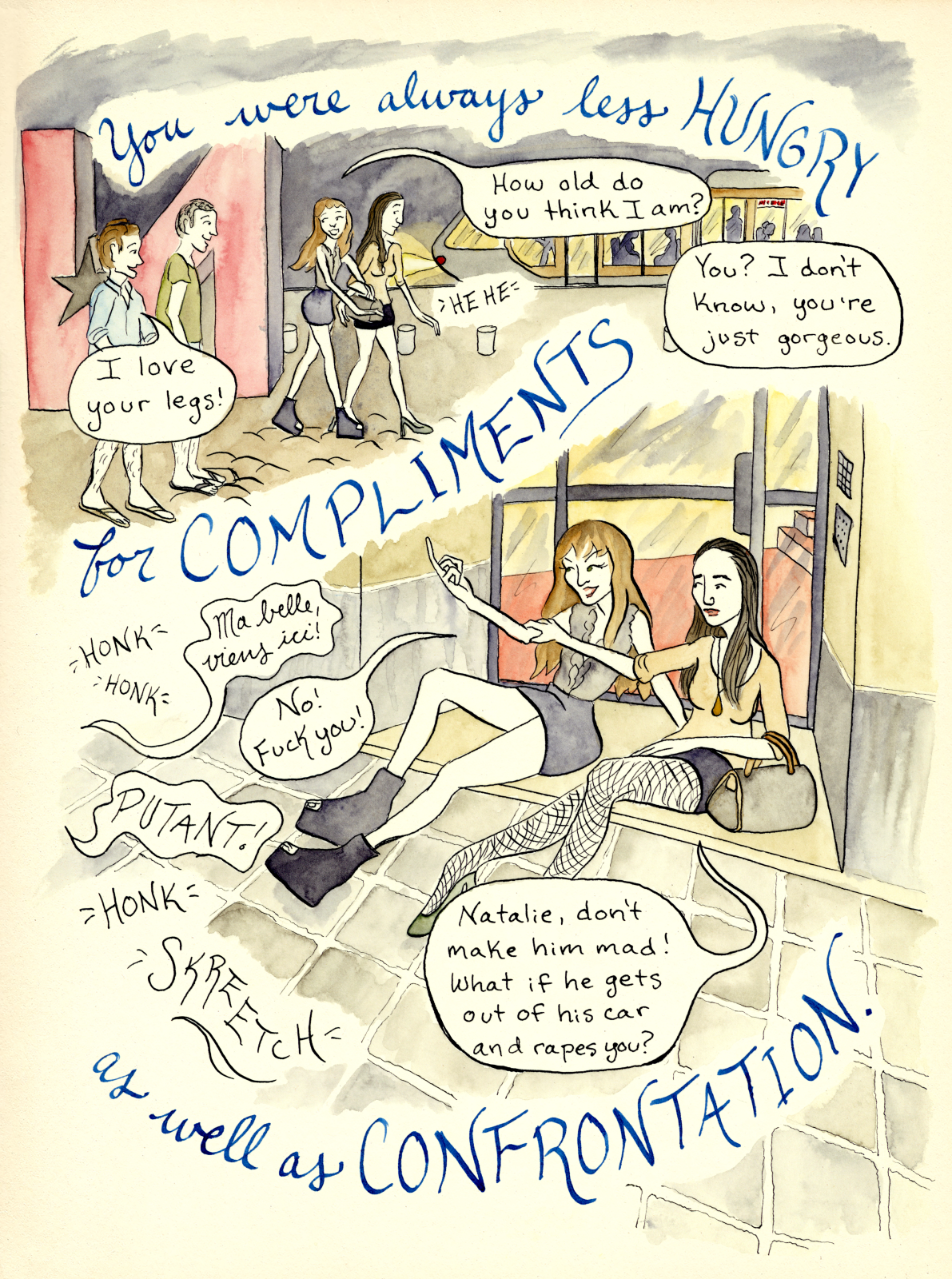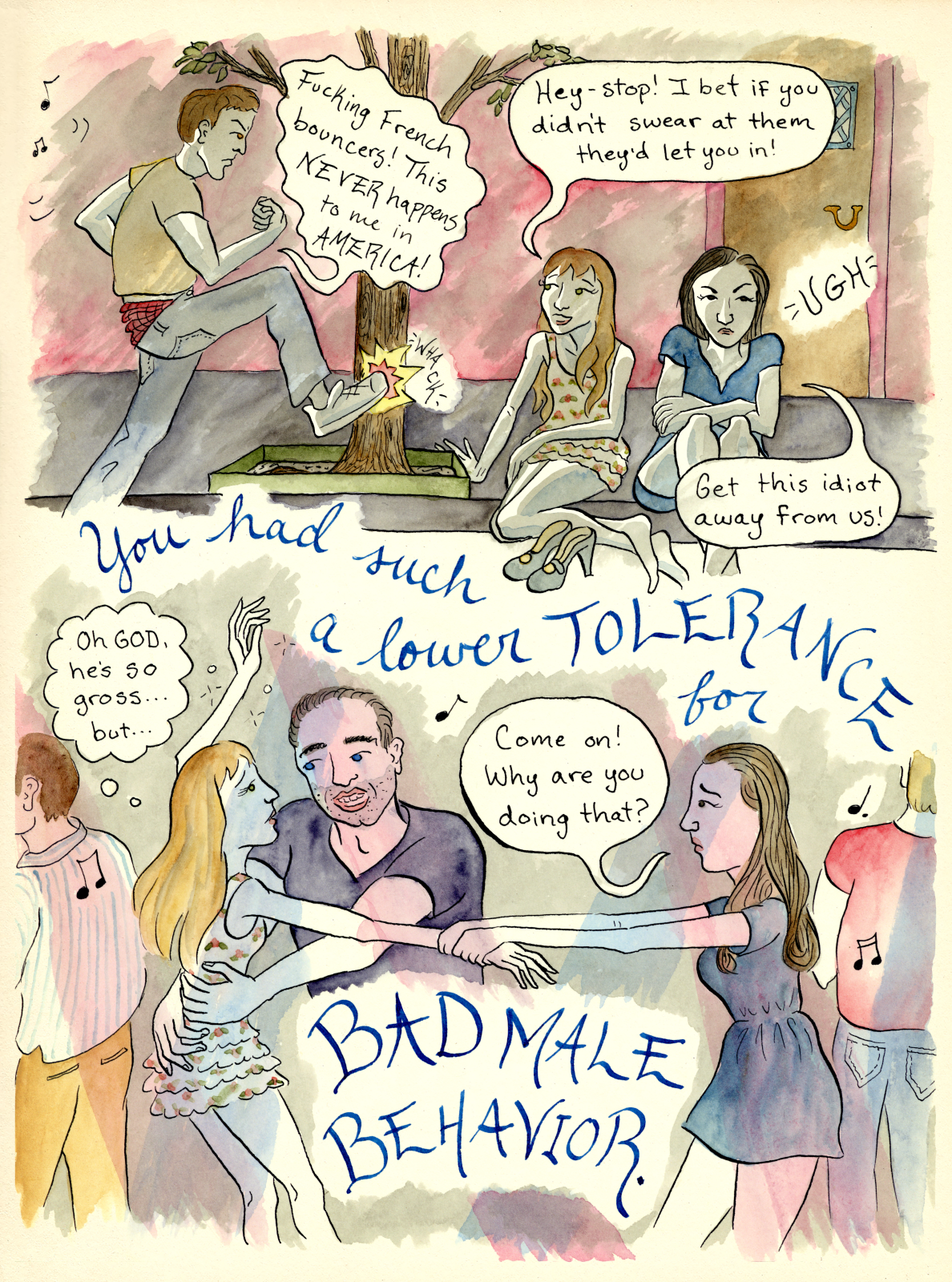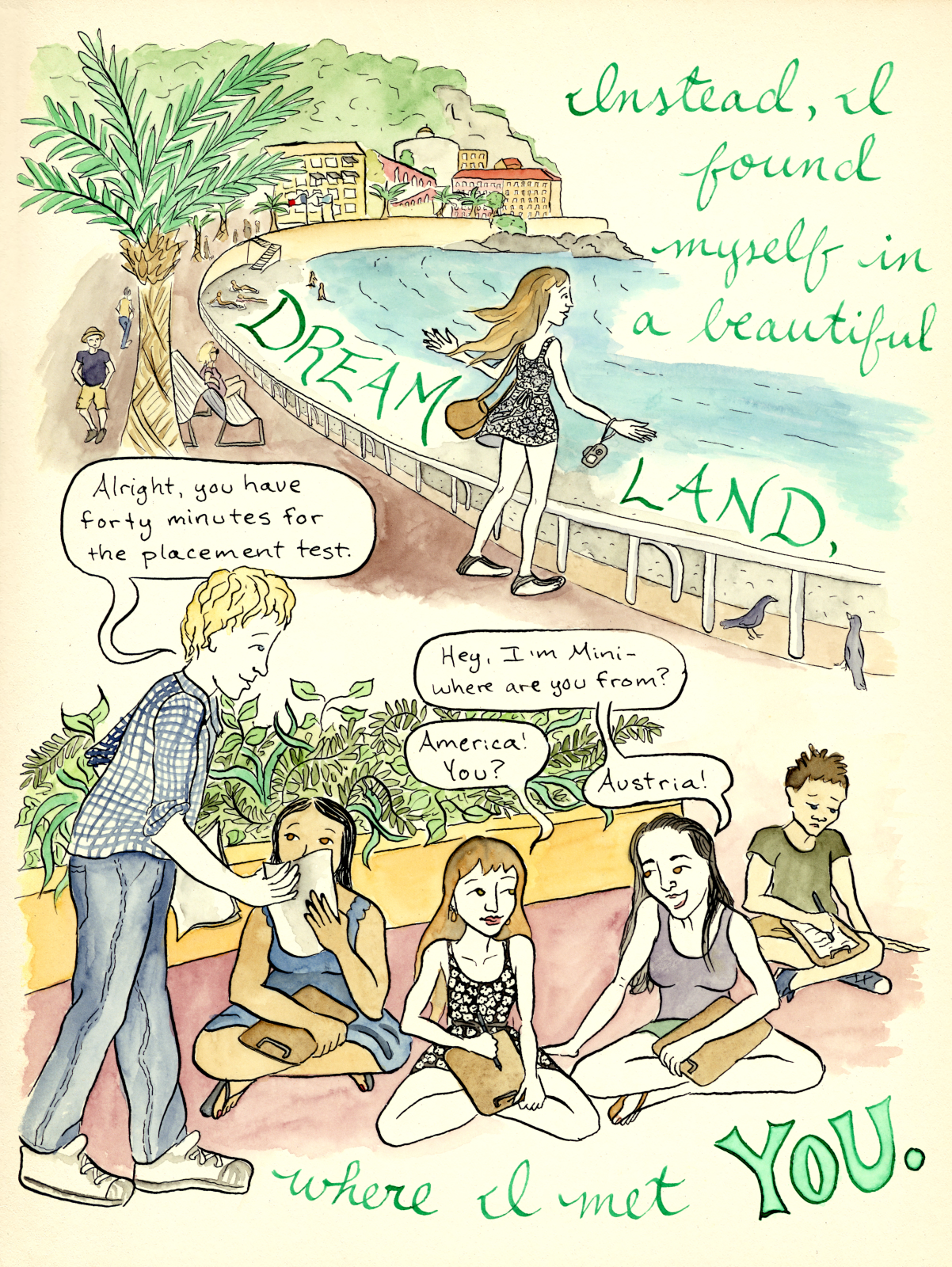Natalie Norris started a diary at age 10. Come middle school, she began regularly documenting her life, and never stopped.
“I think it was for a number of things. Just to have someone to talk to, share about what was going on in my life,” Norris told The Comics Journal. “And then as I got older, I think it was a way to write down things that I knew I couldn’t fully wrap my head around, but I know I knew that it felt important to record them so that at some point I would be able to look back and maybe make sense of all of these things that had happened.”
The 29-year old Norris is the author of Dear Mini: A Graphic Memoir, Book One, which documents a troubled period of sexual trauma in her teens, presented as an illustrated letter to a friend.
The 218-page comic was published on July 4 by Fantagraphics as a 7.4” by 9.4” hardcover book with striking, shiny gold coloring - a childhood dream, Norris said. Work on Dear Mini served as her thesis at the Center for Cartoon Studies in Vermont. It began as a roughly 400-page rough draft, but Norris has been finalizing it into two books, which each have their own story arc. Before it was picked up by Fantagraphics, Norris distributed the comic digitally through her Patreon.
This first volume chronicles a trip Norris took to France, financed by her parents to give her something to enjoy over the summer. Chronic pain and mental illness contributed to difficulties while growing up, and Norris often turned to partying with older men. Throughout the book, Norris frankly portrays her experiences with sexual assault, something she kept a secret for almost 10 years. Like any good memoir, she provides readers an account of what happened - an understanding of how she felt and thought at the time and reflection from her current, adult self.
“How do you hold onto a sense of agency?” as the narration in Dear Mini. “Did I really want them, or did I just want to obliterate my fear with their embrace? How do I explain that nothing, nothing mattered when they were holding me? But when the sun crept up, I left them easily.”
Dear Mini does not make use of conventional comic book panels. Handwritten narration weaves through illustrations with dialogue balloons. For the first draft, Norris worked quickly and let her mind intuitively guide the layout of the pages. When she moved onto a finalized draft, she mostly focused on making the artwork look polished - the content stayed mostly the same.
“Sometimes I would write the text first, and then that would determine where there was space to draw the images, or I would draw one image and write some text,” Norris said. “So it happened pretty organically, but I would just sort of go with whatever was put down, that dictated how I would set up the rest of the page.”
As I read, I sometimes found my eyes first following the narration and then going back to the images, and other times I found myself reading more conventionally, from one piece of narration to the next image to the next piece of narration and so on and so forth until I reached the bottom of the page. This made the experience like swimming through Norris’ memories with her, something she said resonated as we spoke.
“There’s a level of, maybe, inconsistency. You don’t always know how to read each page, you kind of have to approach it and go with it. And I think that also is the way my brain works. Where there's sort of a lot of chaos,” Norris said, laughing. “But if you can put it on the page and make it look pretty, it doesn’t feel quite as chaotic.”
We spoke the week before the book debuted. At that point, it hadn’t yet been widely distributed, though she’s been able to hold it and receive some reactions.
“It’s exciting. I definitely have a lot mixed emotions, and I think that it’s still so early in the process,” Norris said. “I’m sure my relationship to putting the book out is going to change over time.”
The book opens with a dedication to those with similar experiences. “For each of you who once believed: This is just what happens to girls like me.” The best part of the book getting around for Norris is connecting with those folks, she said.
“People are so kind and excited, and I think it is a story that really means a lot to the people who resonate with it,” Norris said. “So it’s really special to get to connect with people, especially about a type of trauma that, part of my experience was keeping it mostly secret for a long time. To then be able to connect with other people has been really nice.”














